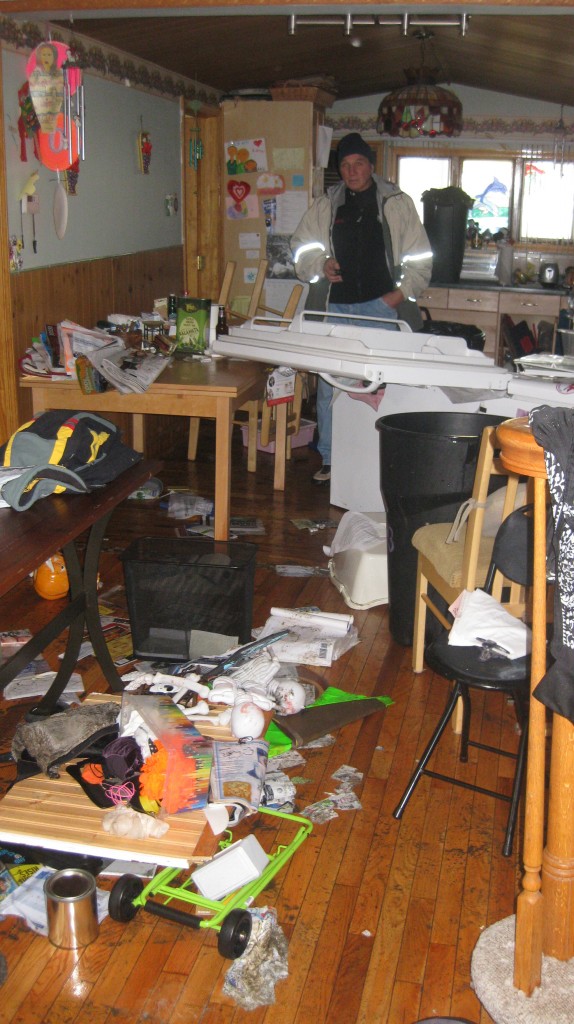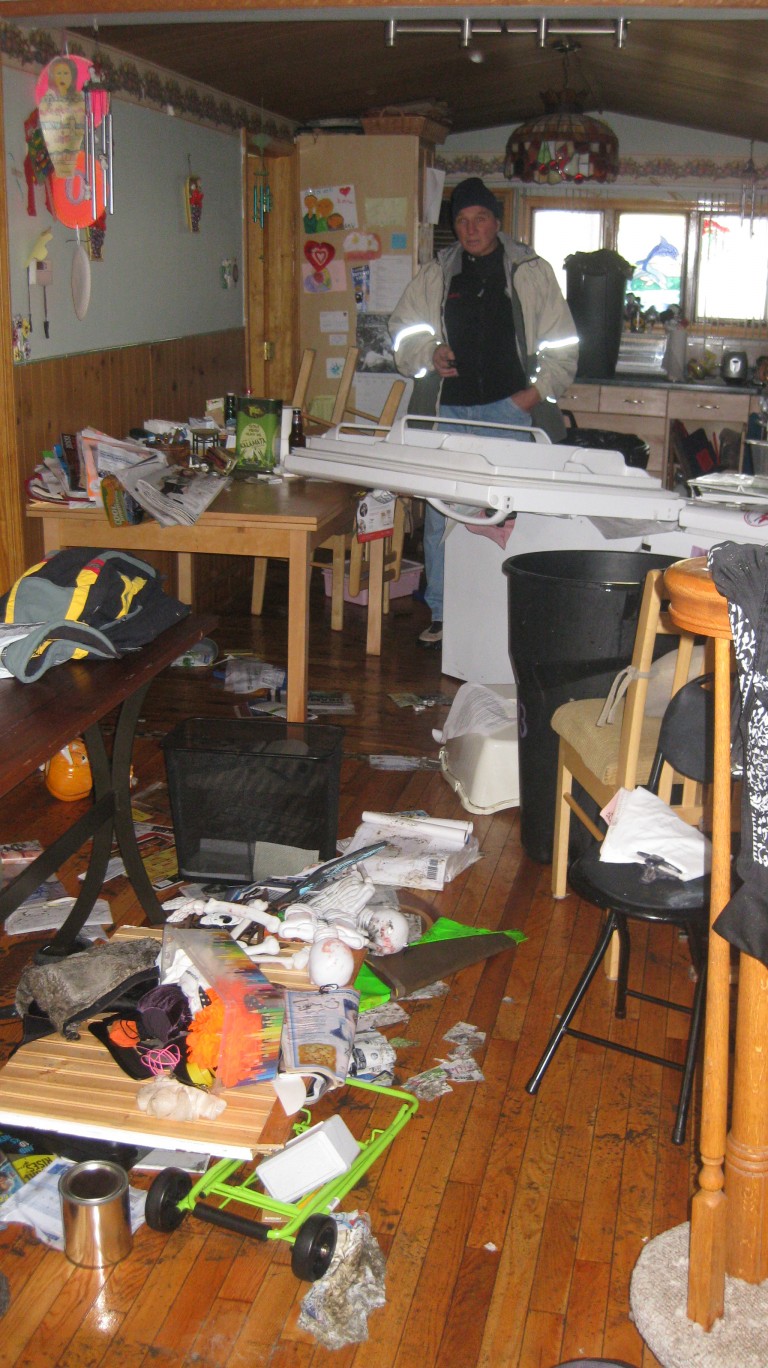
After Hurricane Sandy destroyed their Broad Channel home, pictured here just after the story, Sophia Vailakis-DeVirgilio and her her husband discovered that, after years of paying top dollar for flood insurance, they would receive very little money following the storm.
The numbers are remembered easily, but swallowed hard, rolling off their tongues, but sinking, heavily, into stomachs lined with anxiety, after having to cite them so many times in the nearly year and a half following Hurricane Sandy.
For Broad Channel resident Sophia Vailakis-DeVirgilio, there’s the $250,000 flood insurance plan – and the $69,000 that was awarded. For Palmer Doyle, of Belle Harbor, there was also the $250,000 flood insurance plan that was supposed to help him piece his life back together after eight and a half feet of water poured into his Rockaway home – and the first check that he got for a laughable $1,500.
There is the number of months since Hurricane Sandy: 16; the number of times insurance adjustors have come, emerging from other states far from New York to tell people like Vailakis-DeVirgilio and Doyle that the damage to their homes was not caused by Sandy; the number of sleepless nights and the hours dedicated to trying to get some financial help from a system that residents said seems hellbent on turning its back on the people who, for years, had paid into it.
“In order for us to rebuild, we are being put into further debt,” said Vailakis-DeVirgilio, who, along with her husband and young daughter, have not been able to return to the place they once loved calling home because of everything from battles with insurance companies to a fraudulent contractor. “Our house lost half or more of its value because of Sandy, and we’ve been forced to take another mortgage out.”
“People should be up in arms that people who played by the rules – who paid a mortgage and went to work – are out of their homes by no fault of their own,” she continued. “There should be no one wanting at such a basic level.”
These are numbers that, when pieced together, tell the stories of so many people throughout South Queens and Rockaway – as well as, of course, Brooklyn and Staten Island – who have essentially had to take on another full time job to fight for the money that they always expected would be there in a disaster. Instead, residents said groups like the Federal Emergency Management Agency and insurance companies are doing everything possible to give as little as possible to individuals who just lost almost everything.
“The conversation and the narrative out there is we’re asking for handouts,” Vailakis-DeVirgilio said. “We want to be paid for the loss we suffered; we were paying for insurance, playing by the rules, doing everything everyone’s asked of us – but that’s not good enough.”
Doyle, a retired firefighter who lost 20 percent of his lung capacity because of responding to the Sept. 11, 2001 terrorist attacks and who has become the spokesman for the New York chapter of the group Stop FEMA Now, said he and his wife immediately after the storm began contacting insurance in order to get the ball rolling on rebuilding. After contacting the insurance company the day after the storm – Oct. 30 – an adjustor came the day after Thanksgiving. While it was nearly a month after the storm, Doyle was happy to have someone there and gave the adjustor about 120 photos documenting his house after Sandy. That same day, someone from FEMA came, but because Doyle has insurance he was not able to access funding from the federal agency.
“People without flood insurance got up to $31,000 – I got a check for $1,500 after that visit,” Doyle said. “I said, ‘You’ve gotta be kidding me.’”
It was a statement that was said time and again: You’ve got to be kidding me. Except, they never were. And nobody was ever laughing.
After residents’ battles with FEMA and insurance companies – all while paying mortgages on homes that, in many cases, no longer even existed – individuals have also faced a city program, Build it Back, that was supposed to dispense federal funds for storm victims – but the initiative that is gasping for air under the weight of red tape has not issued a dime.
“It’s disgraceful,” Doyle said of the situation residents face with the various governmental agencies and insurance companies. “There’s no other word to describe it. It borders on criminal.”
By Anna Gustafson

